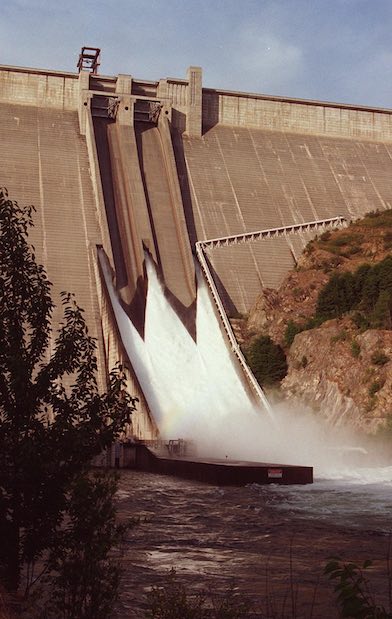forum
library
tutorial
contact

Removing Lower Snake Dams Will Not Return
Salmon, Steelhead to Historic Spawning Habitat
by Fred Mensik
Columbia Basin Bulletin, January 6, 2022
|
the film forum library tutorial contact |

|
Removing Lower Snake Dams Will Not Return
by Fred Mensik
|
Removing LSRD will not return spawning habitat for Payette River sockeye.
 The title of the CBB December 21, 2021 feedback, 'A FUTURE WITHOUT WILD SALMON IS A FUTURE WITHOUT SALMON' is very accurate.
The title of the CBB December 21, 2021 feedback, 'A FUTURE WITHOUT WILD SALMON IS A FUTURE WITHOUT SALMON' is very accurate.
The Payette system sockeye are a prime example of how lost spawning habitat can not only reduce fish numbers, but ultimately eliminate the fish. It took only 14 years of spawning in substandard habitat before the last Payette sockeye was seen below Black Canyon Dam.
The Stanley Basin sockeye were poisoned to near extinction.
The North Fork of the Clearwater River produced 60% of all Clearwater Basin steelhead and up to 70% of all Clearwater Basin Chinook. Clearwater River Steelhead and Chinook numbers plummeted in the immediate years following the construction of Dworshak Dam on the North Fork Clearwater River.
Unlike spring/summer Chinook and steelhead, Fall Chinook spawn in the main stem of the Snake River. Two years after the construction of Dworshak Dam, fish biologists knew fall Chinook were in trouble. Their numbers declined like the Payette sockeye, due to elimination of the best fall Chinook spawning habitat.
None of these Idaho dams have functioning fish ladders. Therefore, it is not coincidence that as salmon spawning habitat is removed, the number of wild salmon declines.
Spring/summer Chook and steelhead spawn in Snake River tributaries while fall Chinook historically spawned in the main stem Snake River in the area above Oxbow Dam in Hells Canyon.
Lower Snake River Dams (LSRD) all built with functioning fish ladders, did not cause these losses of historic salmon spawning/rearing habitats. Therefore, removing LSRD will not return spawning habitat for Payette River sockeye.
Clearwater River steelhead and Chinook spawn in Snake River tributaries, not in the area of LSRD, so removing Lower Snake River dams will not reintroduce them to their historic spawning grounds. Fall Chinook will not reach their historic spawning ground above Oxbow Dam by the removal of LSRD. Lower Snake River dams did not cause this problem; therefore blaming LSRD for salmon being at this critical juncture is not sound science.
We need leadership that understands the consequences of historic events and leadership that understands fish biology. Hatcheries do not replace spawning grounds and hatchery fish do not replace wild fish. Dr. Helen Neville is correct in saying, "A future without wild salmon is ultimately a future without salmon." Unfortunately, those that want to remove LSRD to increase salmon returns, simply do not understand the problem.
Related Pages:
Idaho Dams Must be Part of Fish Discussion by Fred Mensik
Tri-City Herald, 2/11/20
Be Informed About Dam Removal to Help Northwest's Salmon by Fred Mensik, Idaho Mountain Express, 9/5/18
FEEDBACK: Salmon Extinctions by Fred Mensik, Columbia Basin Bulletin, 2/8/8
Defining High Cost, Low Value Dams by Fred Mensik, Columbia Basin Bulletin, 10/20/6
Sources Of Mortality for Snake River Fall Chinook by Fred Mensik, Columbia Basin Bulletin, 7/28/6
Lower Snake Dams and Sockeye Salmon by Fred Mensik, Columbia Basin Bulletin, 6/23/6
learn more on topics covered in the film
see the video
read the script
learn the songs
discussion forum
